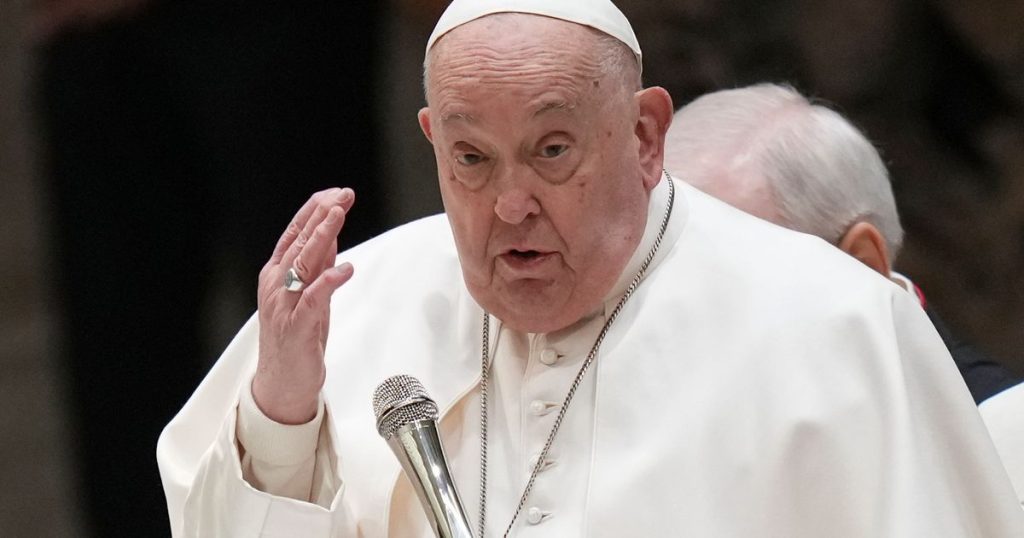Pope Francis remains in critical condition at Rome’s Gemelli Hospital, where he is battling a severe respiratory infection and pneumonia. The 88-year-old pontiff, known for his frail health and chronic lung disease, was hospitalized on February 14 after a bout of bronchitis worsened. His condition has sparked widespread concern among Catholics and non-Catholics alike, with prayers pouring in from around the world. Despite his critical state, Francis has shown signs of resilience—he reportedly attended Mass in his hospital room and remains alert and responsive. However, his doctors caution that his prognosis remains uncertain, emphasizing the complexity of his condition and the need to closely monitor his response to treatment.
The Vatican has provided regular updates on the pope’s health, revealing that he has experienced early signs of kidney failure, though this is currently under control. Francis is also receiving high-flow oxygen therapy to aid his breathing, and while he has not suffered further respiratory crises since Saturday night, his low platelet count and anemia have required medical intervention, including blood transfusions. Doctors are working to manage these issues and prevent complications such as sepsis, a potentially life-threatening infection that could arise from his pneumonia. As Francis’s health hangs in the balance, the global Catholic community remains united in prayer, hoping for his recovery but also preparing for the possibility of losing a spiritual leader who has profoundly shaped the church during his decade-long pontificate.
Prayers for Pope Francis have transcended religious and cultural boundaries, reflecting his enduring appeal and the widespread affection he has cultivated during his papacy. In Argentina, his homeland, cathedrals and landmarks have become focal points for collective prayer, with the iconic obelisk in Buenos Aires lit up with messages of support. In Cairo, Sheikh Ahmed al-Tayeb, the Grand Imam of Al-Azhar, a prominent figure in Sunni Islam, expressed his wishes for Francis’s swift recovery, highlighting the pope’s efforts to foster interfaith dialogue and collaboration. Meanwhile, in New York, Cardinal Timothy Dolan acknowledged the gravity of the situation during a homily at St. Patrick’s Cathedral, likening the Catholic faithful to a family gathered at the bedside of a dying father. Dolan, while expressing hope for Francis’s recovery, also urged the faithful to remain united and prayerful during this challenging time.
In Rome, where Francis has lived and served as pope, the outpouring of affection has been particularly heartfelt. Schoolchildren from across the city have flooded Gemelli Hospital with get-well cards, while Italian bishops have led rosary prayers and special Masses in support of the pontiff. Despite his physical absence, Francis’s presence has been deeply felt, with Archbishop Rino Fisichella, the organizer of the Vatican’s Holy Year, emphasizing during Sunday Mass that the pope remains close to the hearts of the faithful. Fisichella celebrated the Mass that Francis had been scheduled to lead, delivering a homily the pope had prepared and offering a special prayer for his recovery. The Holy Year, a significant event in the Catholic calendar, has taken on an added layer of poignancy as the church navigates this uncertain moment in its leader’s life.
Francis’s recent decisions have also sparked speculation about his awareness of his advancing age and fragility. In the past year, he has taken steps that appear to address the eventual transition of power within the church. For instance, he revised the funeral rites for when his time as pope comes to an end, simplifying the ceremonies to reflect his humility and desire to be remembered as a simple bishop rather than a monarch-like figure. He also named 21 new cardinals, the majority of whom are young enough to participate in a future conclave to elect his successor. Additionally, Francis extended the terms of key figures in the College of Cardinals, including the dean and vice-dean, ensuring continuity during this critical period. These moves suggest that he is mindful of the challenges his declining health poses and is actively preparing the church for the future.
As the world watches and prays, the situation underscores the profound connection between Pope Francis and the global Catholic community. His papacy has been marked by a deep commitment to compassion, social justice, and interfaith understanding, earning him admiration far beyond the Catholic Church. While his physical condition remains precarious, the outpouring of love and support serves as a testament to the spiritual bond he has cultivated with people of all walks of life. Whether through the heartfelt prayers of schoolchildren, the interfaith solidarity expressed by religious leaders, or the quiet hopes of the faithful, Pope Francis’s journey is being shared by millions around the world. As the Vatican and the global church await further updates on his health, one thing is clear: the prayers and well-wishes for Pope Francis reflect not only a deep affection for his person but also a profound appreciation for the spiritual leadership he has provided during a time of great challenge and change.









